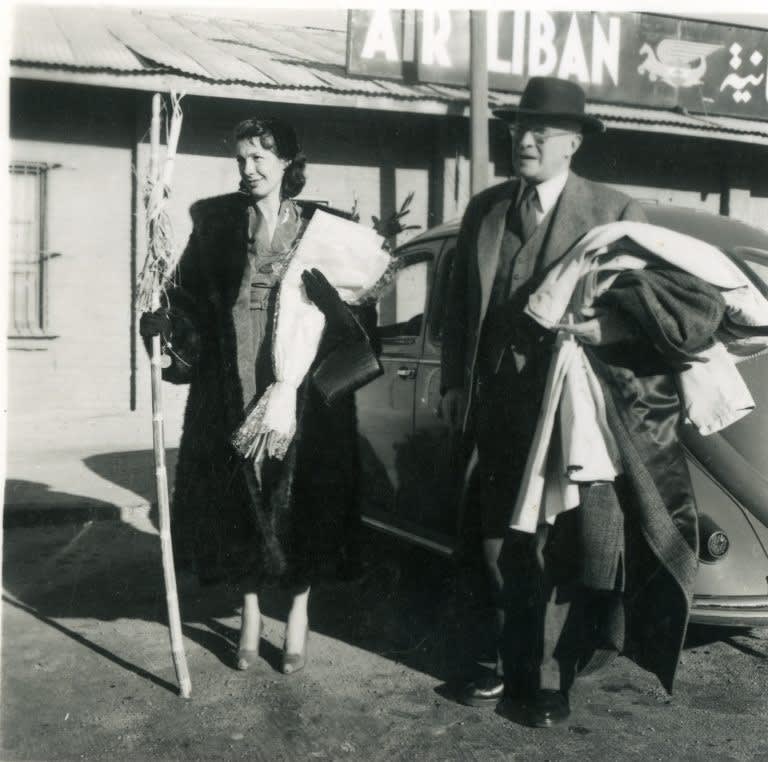
On December 15th in Paris at the Hôtel Drouot, Christie’s, in cooperation with the French auction house Millon, will be offering nearly 80 objects of African and Oceanic art from the estate of Madeleine Meunier. The appearance on the market of the Madeleine Meunier estate has been eagerly awaited. In recent years, speculation about the content of this collection has taken on mythic proportions, because Meunier was married, successively, to two great figures in the world of African art: Aristide Courtois and Charles Ratton. Each played a major role in the discovery of African art, Courtois in Africa and Ratton in Paris.
Aristide Courtois (1883-1962), a French colonial administrator in the Congo, brought back hundreds of objects acquired during his assignments in the regions where he was stationed. Having an exceptional eye for distinguishing between masterpieces and ordinary objects, Courtois was one of the first colonial administrators to see these ritual objects as true works of art. Once back in Paris, Courtois worked with the first great African art dealer, Paul Guillaume, with whom he would conduct many transactions. Courtois married Madeleine Meunier in 1938 and the couple had a daughter, Annie. Madeleine Meunier kept a number of works from this period in her life: three Kota reliquaries from Gabon and four major works of Kuyu art from the Northern Congo, all collected by Aristide Courtois. Upon Guillaume’s death in 1934, Courtois developed ties with Charles Ratton, who became a loyal customer and purchased many pieces from Courtois. Ratton’s purchase records from 1938 to 1943 list some two hundred transactions, including the famous six-eyed Kwele mask known as the “Lapicque mask”, now part of the collections at the Musée du Quai Branly-Jacques Chirac.
A few years later, Madeleine Courtois separated from her husband to marry Charles Ratton. Meunier would have a son with Ratton: the recently deceased Charles-François Ratton. Charles Ratton (1897-1986) – who was honoured with an exhibition at the Musée du Quai Branly-Jacques Chirac in 2013 – had a significant impact on the history of African art by virtue of his talents as an expert, collector and dealer. He played a fundamental role in raising so-called primitive objects to the ranks of true art. Sensitive and erudite, Ratton forged a path as a dealer for ‘Haute Époque’ (Medieval and Renaissance) objects, which led to an interest in African arts, then antiques from South Seas and the Americas, and, atypical for the time, Eskimo art. In 1935, he was a major lender and advisor to the landmark African Negro Art exhibition (Museum of Modern Art, New York), the first African arts show held in a museum of modern art. Ever seeking new opportunities to place African art on the forefront, he included his Yaka headrest (estimate: €40,000-60,000) at an exhibition at the Théâtre Edouard VII in Paris in 1936 celebrating the film premiere of The Green Pastures. Ratton also served as artistic advisor to the renowned 1953 film Les Statues Meurent Aussi (‘Statues Also Die’), directed by Chris Marker and Alain Resnais for Présence Africaine (it was the subject of an exhibition at the Monnaie de Paris in 2010). Two pieces from the Meunier collection appear in this film, whose whereabouts remained a secret for the past fifty years: Charles Ratton’s superb Fang male on a base by Inagaki (estimated value: € 300,000-500,000) and a Luba-Shankadi headrest (estimate: €500,000-800,000). This masterpiece can be attributed to the most renowned sculptor of the pre-colonial period: The Master of the Cascade Coiffure, active in the Democratic Republic of the Congo in the late 19th century. Other headrests by this master carver can be found in important museums, such as the Metropolitan Museum of Art (#1981.399), the British Museum (#AF46.481) and the Ethnological Museum of Berlin (III.C.19987).
Other great objects formerly in the collection of Charles Ratton are an exceptional Hungana pendant (estimate: €15,000-25,000), an exquisite little Vili figure (estimate: € 3,000-5,000) and two Sepik River works from Papua New Guinea, probably acquired from Pierre Loeb, including a four-caryatid headrest estimated at €30,000-40,000. Below you can find some non-professional pictures of our preview last week (click on the images to zoom). Concomitantly with Parcours des Mondes, we exhibited a small selection of highlights of the Meunier collection together with the Old Master Paintings and French antiques that were being sold this week – which worked surprisingly well and succeeded in attracting the attention of collectors that normally would never look at African and Oceanic art.



